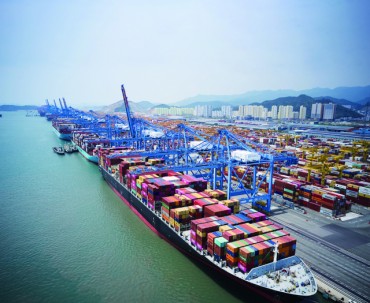
A restaurant worker prepares to greet customers as health authorities relaxed rules on private gatherings over the pandemic on Oct. 18, 2021. (Yonhap)
SEOUL, April 21 (Korea Bizwire) — The proportion of non-regular workers who are forced to continue their work despite suspected COVID-19 infections is more than twice that of regular workers, a survey showed Wednesday.
Gabjil 119, a pro-labor civic organization, and the Public Workers Solidarity Foundation conducted a survey of 2,000 employees, in which 43.7 percent of non-regular workers said they had continued to work despite the symptoms related to the coronavirus.
This was almost twice as high as for regular workers (23.4 percent).
Among regular workers, 80.3 percent had received a polymerase chain reaction (PCR) test after they or their family members experienced COVID-19-related symptoms. In contrast, only 73.6 percent of non-regular workers responded likewise.
The ratio of people who decided not to get tested despite the symptoms was higher among non-regular workers (26.4 percent) than regular workers (19.7 percent).
“There are no statistical correlations in the rate of infections between regular and non-regular workers,” noted Hwang Seon-woong, a professor of economics at Pukyong National University.
“The difference in the ratio of getting tested is caused by the difference in the economic loss incurred just for being employed irregularly.”
In fact, 36.9 percent of regular workers infected with the disease were able to go on paid leave, while only 16.2 percent went on unpaid leave.
As for non-regular workers, a whopping 42.1 percent had to go on unpaid leave, with only 13.8 percent of them going on paid leave.
Around half of non-regular workers said they had experienced a loss of income after becoming infected with the virus, which was nearly 2.2 times higher than for regular workers (23.6 percent).
The data also showed that 10.1 percent of non-regular workers were forced to quit their jobs after testing positive, which was 6.7 times higher than regular workers (1.5 percent).
“For workers in a disadvantageous labor environment, COVID-19 only exacerbates job instability,” said Shin Hee-ju, a sociology professor at the Catholic University of Korea.
H. M. Kang (hmkang@koreabizwire.com)





